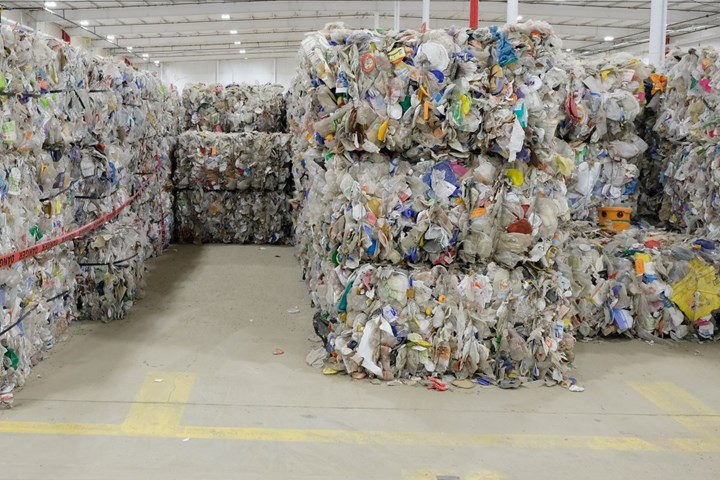Recycling Report Describes Status of Material Recovery From Consumers
State-level data in the 2024 State of Recycling Report enables comparison of collection strategies.
The , a nonprofit organization dedicated to improving the recycling system, has released a report describing the status of recovery of recyclable materials from U.S. households. The report considers all materials sold by MRFs to be “recycled,” therefore loss in conversion is out of scope.
Across all materials — including paper, glass and more as well as plastic — 21% of recyclable materials are being recycled. The report puts access to recycling programs as 73%, a figure that includes single-family homes with access to curbside or drop-off recycling, and multifamily homes with curbside recycling.

PET and HDPE containers still make up most of recycled plastic, although PP recycling is now at 8%. Photo Credit: Matt Stonecash
Recycling rates and access to recycling are broken down by state, enabling comparison between collection strategies.
California and Oregon have the highest overall recycling rates at 37%. Mississippi and Louisiana have the lowest at only 8%. These figures include paper, glass, cardboard and more as well as plastic. Higher rates generally correlate with curbside collection, although Vermont and Maine get most of their recycling recovery via drop-off.
Bottle Bills and PET Bottle Recycling
States with container deposit laws (bottle bills) have high rates of PET bottle recycling, especially Oregon (75%), Maine (65%), California (61%), and New York (59%). No state without container deposits had over 30% recycling of PET bottles.
California had the highest recycling rate for HDPE containers, both natural (37%) and colored (33%). The report puts the national recycling rate for PP at 8%, #3/6/7 (PVC/PS/others) at 1% and film at 0.1%. Nearly 4.8 million tons of film and flexible material are generated annually.
Future Directions in Material Capture
The report also lists strategies for investing in improving recycling rates, such as EPR, and their projected impact on recovering the material currently being lost from the system.
“Each link of the recycling system is interconnected, so we need to close all the gaps, but we can make the greatest strides by investing in access to recycling services, and communication, and outreach so that people can recycle from their homes and fully participate,” says Cody Marshall, chief optimization officer at The Recycling Partnership.
The PLASTICS industry association released a statement in support of the effort. “The data from this report will enable industry and policymakers to understand and better engage individuals about the importance of the recycling process, ensuring more valuable recyclable material is captured and reprocessed effectively,” says Matt Seaholm, PLASTICS CEO.
Related Content
-
BASF Highlighting How They 'Make, Use and Recycle Future Solutions'
NPE2024: BASF is using its proprietary computer-aided engineering tool Ultrasim when designing for sustainability in a broad range of industries.
-
Circular Plastics From Cyclic Molecules
Macrocycle is pioneering an approach to PET recycling via cyclic oligomers.
-
Looking to Run More Regrind? PTXPO Workshop Tackles How
When it comes to making injection molding operations more sustainable, the lowest hanging fruit is the use of regrind, but that doesn’t mean it’s not without challenges.






